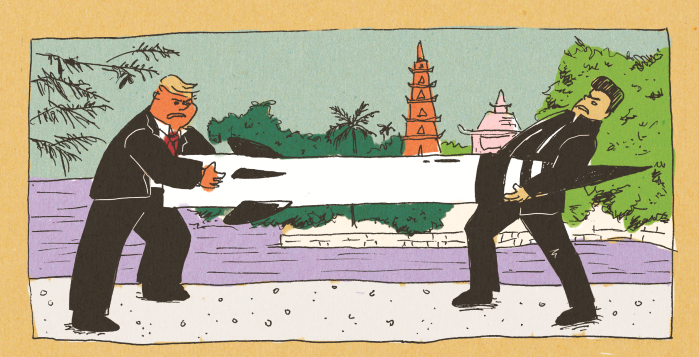At the beginning of this term, the Portland State Office of Information Technology installed new print release workstations in the Neuberger Hall basement computer lab. The new system holds all print jobs from the computers in a “virtual queue,” said Michael Jantzen, a member in user support services on the labs and classrooms team. The job is held in the virtual queue until the student types in their username and the job is released.
Sustainable printing system implemented in Neuberger Hall computer lab
At the beginning of this term, the Portland State Office of Information Technology installed new print release workstations in the Neuberger Hall basement computer lab. The new system holds all print jobs from the computers in a “virtual queue,” said Michael Jantzen, a member in user support services on the labs and classrooms team. The job is held in the virtual queue until the student types in their username and the job is released.
“The idea is two-fold actually—one is that when you come up and actually punch in your username, it can see that you accidentally clicked print twice, or you’ll see something that you didn’t really want, so you’ll ignore it or click cancel,” Jantzen said.
There are three print release stations in the Neuberger lab, as well as one color release station. Each station has its own printer, so students printing out jobs will know exactly which printer their papers will be on.
“I’ve watched students go up to the printers in other labs and watch to see which printer theirs is on,” Jantzen said. “So they’ll shuffle through other people’s papers, and there are mounds of unclaimed print jobs.”
Computer engineering junior Erik Wright works as a lab attendant and said that before the new print stations, each printer would have a file holder next to it, full of unclaimed print jobs.
“It saves so much paper,” Wright said. “This is just one lab, and we’ve already seen an amazing difference.”
Wright also pointed out that the new system saves students a lot of time: “If I am one of the lab users way over on the side and I hit print, I then get up and walk over to the printer, and it’s already printed out. But I have to choose between three printers, which are also printing everybody else’s prints at the same time,” Wright said. “It kind of doesn’t feel like it’s saving time, because you have to go through the extra step of logging in, but in reality, it’s really beneficial.”
Each PSU student gets a print allotment of 500 pages per term. After that initial quota has been used, their student account is charged per additional page printed. Jantzen said that before these stations, students would commonly say that they couldn’t find their print job, and sometimes they would be refunded those prints. He said that since these release stations have been in place, that hasn’t happened once in the Neuberger lab.
“Even in a failure situation, where the release station doesn’t work for whatever reason, the job will go into the queue, and after about 15 minutes it will dump automatically and get credited back to your account, so you won’t get billed for it,” Jantzen said. “So it’s smart.”
The hardware and software was put into place over spring break, but this release system has been in place on the color print stations for the last two terms. Jantzen said that the plan is to implement this system in all of the labs over the summer. There are about 12 release stations planned for roll-out after this term.
Jantzen said that there is a license cost for the software, but that OIT paid for the accounting software ages ago.
Jantzen’s role was to setup the print release stations, with the help of a student worker, liberal studies senior Andrew Goss. Many groups in OIT worked together to make the system happen: the Windows Server Team, which runs the servers; the Instructional Design Center, which made all the signs around the monitors; and the Instructional Computer Labs team, whichput the hardware in place.
“Eventually we’ll have something in place where you can just slide your student card through and it will show all your print jobs,” Jantzen said. “That’s what we’re working on, but that won’t be for another year or two.”
In the Neuberger lab, there are always attendants available to help or answer questions. There are also many posters up all around the print release stations that explain and instruct how the system works.
“It’s far less hectic and stressful. It’s just nicer to be able to do everything I need to on the computer, and then right as I’m leaving, print everything out,” said anthropology freshman Madi Goldsmith. “I think that a lot of paper isn’t being wasted, which is really great. Because I think that was one of the biggest things; piles of lost things that ended up not being necessary would stack up by the end of the day, and if that’s avoidable, then that’s great.”







